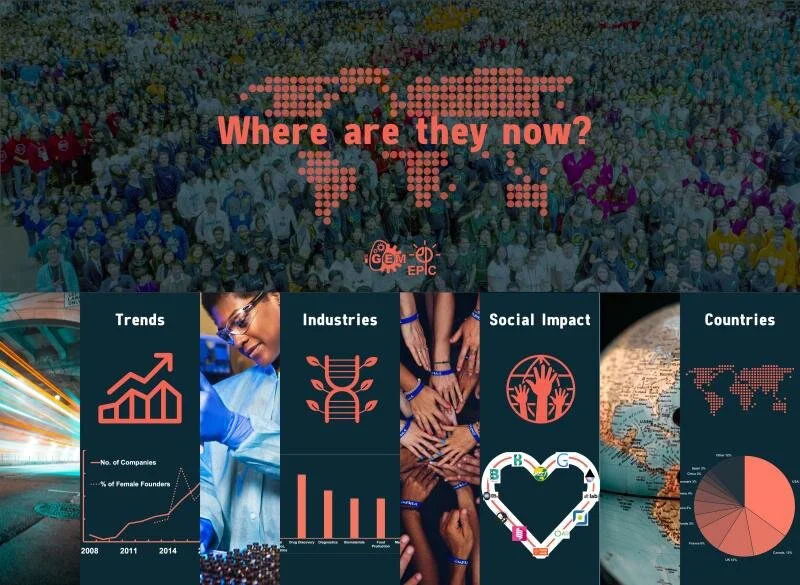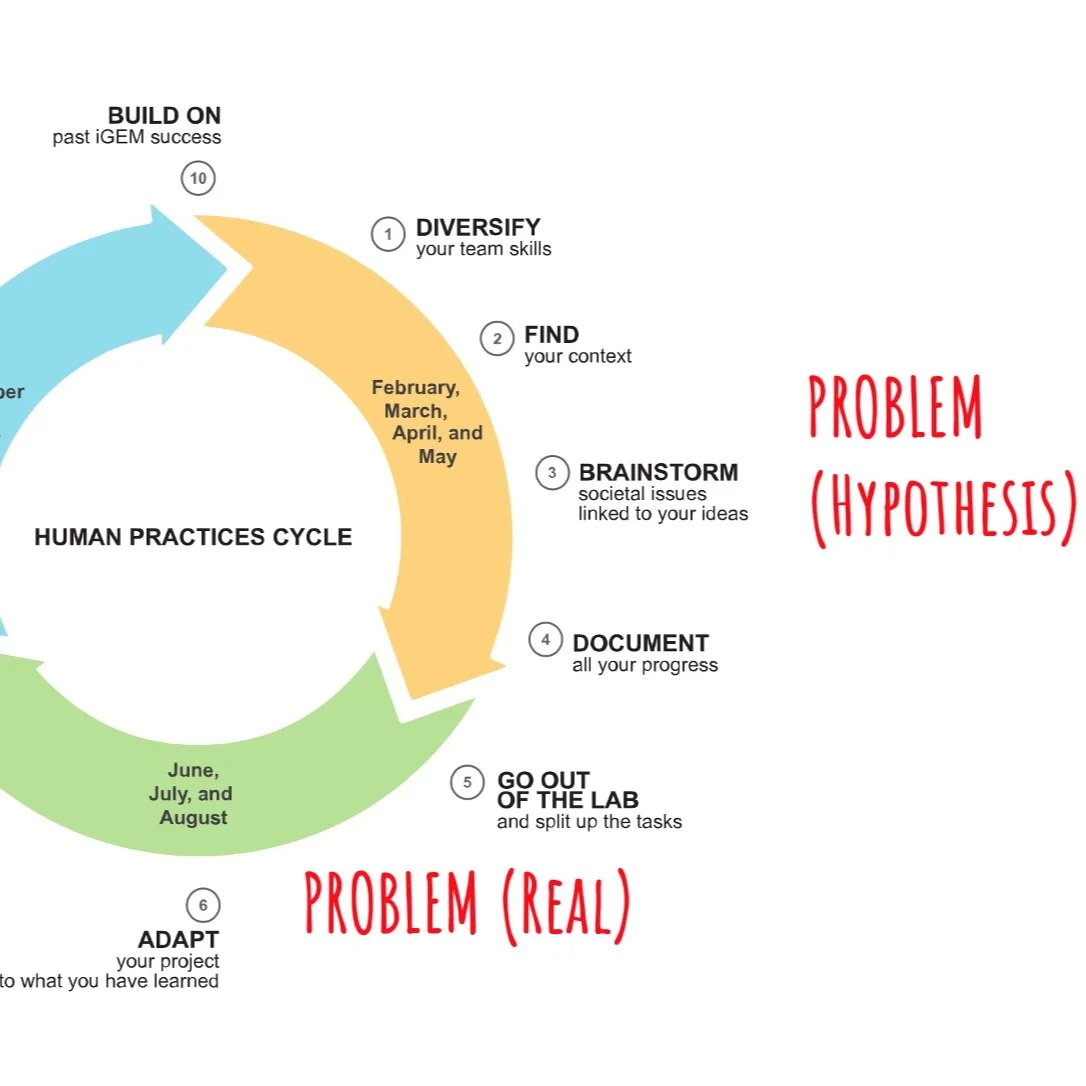How to Find Insights from Social Science Research Related to Your Project
by Joy Zhang, on behalf of the Human Practices Committee
Joy Zhang also gave a session on this topic at iGEM’s 2020 Opening Weekend Festival (YouTube)(Bilibili)
By way of background, I am currently a sociologist at the University of Kent. But before I was trained as a sociologist, I was originally trained as a surgeon. When I switched from medicine to the social sciences, I came to appreciate just how frustrating it can be to read academic papers from a different discipline – in the eyes of a new graduate from medical school, the sociology articles appeared to be so dense and seemed to be written in a foreign language.
If you find interpreting social science research challenging, please know that you are not alone. Finding insights from social science research does not come naturally to anyone, including social scientists! In fact, my department at the University of Kent offers a semester-long module for both undergraduate and graduate students that is specifically dedicated to this topic.
Here, I’ll try to compress everything that is taught in that semester-long module into five key points for finding insights from social science research related to your iGEM project. What I hope you will realize is that the skills and thought processes required for understanding social science research are very similar to the skills and thought processes required for the natural sciences, and can be summed up in two words: Critical Thinking.
The motto of the Royal Society of London is Nullius in Verba, which is Latin for “take nobody’s word for it.” What is required of us in the social sciences, as in natural sciences, is to not just take someone’s word but instead analyze and evaluate the data that is presented so as to form our own judgement. This is the essence of critical thinking. The following five key steps will help you in applying critical thinking as you navigate social science research.
iGEM team presenting the Human Practices part of their project at the 2019 Giant Jamboree
Step 1: Be clear about what you want to know
You may think that you already know what you want to know. But do you? Take a moment to think through this question. You may know the general area of what you want to know – a population, a place, a particular area of the economy, etc. – but have you thought about the special characteristics that makes this area special? What makes the population you are studying special? What is so special about the place that you care about?
Tip!
Write down key adjectives that describe the special characteristics of the area you care about. These adjectives will work as an “anchor” for your targeted reading at a later stage (we’ll come back to key adjectives in Steps 3 and 4)
Step 2: Be smart about what type of research you look up
Your time is limited and so you should use your time wisely when deciding what social science research to read. There are two types of social science research – one is quantitative (surveys, national census, other statistical studies) and the other is qualitative (interviews, focus groups, ethnography, etc.). Those of you with backgrounds in the natural sciences or engineering may be naturally drawn to quantitative research because you are comfortable with numbers, but quantitative research may not give you all of the information you want to know. Most of the time, a mixture of both quantitative research and qualitative research is needed for an iGEM project.
Quantitative research provides a thin account of social issues, and is really good at answering the “What” questions. For example, What is the general attitude toward GMOs? What is the general uptake of certain types of behavior? What does it look like when you break it down in terms of region, age group, socio-economic class, or religion?
Qualitative research provides a thick account of social issues, and is really good at answering the “How” and “Why” questions. Qualitative research will not tell you how many people are in favor of a particular therapy, but it will tell you how they make up their mind about whether or not to go for that therapy. For example, Why did they make the decision they made? How did they reach this conclusion? Why did their decision make sense for their own situation?
Tip!
If you want to know the potential market size for your research or want to profile your potential users, then look for quantitative studies. If you want to want to know how to improve trust, or change behavior, or embed your research in a particular setting or community, then look for qualitative studies.
A word of caution about quantitative research … far from being straightforward and simple, numbers can be really tricky. In fact, the book How to Lie with Statistics by Darrell Huff, which was written in the 1950’s, has been the most widely circulated textbook among social science students. The book is not about teaching the readers how to manipulate statistics, but instead captures all the thing that could go wrong with a survey, such as loaded questions, cherry-picking of data, and data dragging. For a more in depth discussion, please see the presentation on Designing Scientifically Valid Surveys (YouTube, Bilibili).
Tip!
Check out Spurious correlations by Harvard graduate Tyler Vigen for examples of correlations that are statistically significant but that do not make sense socially.
Judges discuss a team project’s during the Poster Session at the 2018 Giant Jamboree.
Step 3: Be critical of the sources
Before you begin reading, look at the date of the publication and the authors. You need to know when the work was published and who wrote the work. This is not only because groups with particular interests will give a different portrayal of an issue than groups with different interests (for example, left leaning newspaper may have a different emphasis from right-wing media) but also because authors from different disciplines (e.g. political scientists, economists, and sociologists) tend to highlight different points. This is not to say that authors are intentionally distorting an issue. Instead, authors necessarily want to speak in a way that represents the values of their own community. Knowing where the author’s views come from will help you contextualize and assess the validity of the author’s arguments.
Tip!
Look at the adjectives you wrote down in Step 1 that describe the special characteristics of what you care about. Ask yourself how close the values of this author’s community are to the values of the community you wish to serve. Are their values similar, or do they represent a counter-argument, or are they irrelevant? (we’ll come back to the importance of counter-arguments in Step 5)
Step 4: Be mindful of the context
When you are reading social science research, you need to be mindful of two types of context. For one, you need to be aware of the social-political context (and here is where the adjectives you wrote down in Step 1 are helpful). Ask yourself whether the paper is talking about the same development stage or similar racial or social economic profile that you care about, or whether the paper is talking about something quite different. You want to know how big a gap there is between the context you want to understand and the context that a particular social science research paper is describing.
The second type of context is the conceptual and methodological context that the study is talking about. You may find yourself confronted with seemingly conflicting or even contradictory arguments, and sometimes these contradictions may both be right. For example, during the COVID-19 pandemic we have all been confronted by the discussion about whether we should wear a mask (I sometimes joke that the question ‘to mask or not to mask’ has become the new existentialist question we are facing at the moment). Of course, there are naysayers and yea-sayers, and both can draw on scientific evidence and everyone thinks they are right.
And I dare say everyone is right. Why? Because when we think about this question of whether everyone should wear masks to slow down the pandemic, there are different ways to approach it. If we frame the question “Does wearing a mask help to stop the pandemic and prevent individuals from getting the infection?” then there is considerable doubt because there are other factors that cause people to become infected. In this case wearing masks is not the only solution and the naysayers are right. But if we frame the question “Does wearing a mask show a sign of civil mindedness and help prevent individuals from spreading the infection?” then there is something else worth considering and the yea-sayers are right.
This is an example of “issue bias” in that people may have a bias towards what type of questions should be asked, and this consequently affects what they see as evidence and how they portray that evidence. Conflicting conclusions often means that the social scientists are examining the same topic but, because they ask the questions differently, they are actually examining very different issues. Just as you must be aware of the laboratory experimental conditions to understand conclusions in the natural sciences, you must be aware of the social context or conditions that social scientists are ascribing to their conclusions.
Tip!
When you find conflicting conclusions in social science research, it’s time to become excited and not frustrated because it means that you discovering the nuances of the problem.
Calgary 2019 team members at canolaPALOOZA, the "agronomy event of the summer". Photo Credit: iGEM Team Calgary 2019
Step 5: Be reflexive when integrating social studies into your iGEM project
Once you’ve spent time reading social science research and begin to assimilate the studies into your project, you’ll find that the studies tend to fall into four categories: 1) those that confirm what you know, 2) those that help you find areas that you need to address, 3) those that alert you to issues you haven’t thought about, and 4) those that are interesting but not relevant to your project. Of course, you can discard the studies that are not relevant … BUT … before you discard those studies, take a moment to consider two types of bias – confirmation bias and attentional bias.
Confirmation bias reflects the reality that we naturally assign higher value to information that confirms our beliefs. Before you discard a study that you think may be irrelevant, ask yourself again if you have given due consideration to the inconvenient facts or annoying opinions or counter-arguments in that study.
Attentional bias reflects the reality that we tend to pay more attention and assign higher value to strategies we are comfortable with and discard other strategies. For example, many iGEMers and other scientists think that public distrust or misunderstanding of science can be counteracted by more science education or better explained scientific facts. Why? Because we are more comfortable with speaking science. But maybe science education is not really the problem. Before you come to the conclusion that more science education is needed, you need to ask yourself … have you tried to really understand what's going on in people's head?
Tip!
When deciding what social science research to integrate into your iGEM project, look back on Step 2 and ask yourself … have you tried to understand the Hows and Whys of people’s behavior? You really need to push yourself to consider a different or diverse approach, and to take confirmation bias and attentional bias into account.
In closing, I hope that you find these five steps helpful for integrating social science research into your iGEM project. There are additional resources to help you that you will find on the iGEM 2020 Human Practices Hub. And if you have questions or ideas, please get in touch with us at humanpractices@igem.org.










